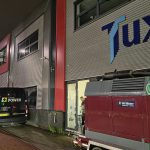Chip manufacturers are warning of a shortage in DRAM, NAND and probably HBM memory chips because demand from cloud providers is outstripping supply. The problem is compounded by the Trump administration’s recent ban on Chinese factories manufacturing these components.
The largest component manufacturer, Samsung, announced last week in the Korean press that it was going to focus on the production of DRAM chips to the detriment of NAND at its Pyeongtaek and Hwaseong factories in South Korea, which until now have manufactured both types of component.
The reason given is that RAM is receiving the highest demand from customers. This explosion in the need for DRAM stems from the high volumes of memory required in servers to load artificial intelligence (AI) models, the size of which – often many tens of gigabytes – far exceeds that of traditional web applications. And that’s just to cover inference needs – that is, the use of pre-trained AI by businesses.
The pressure on DRAM manufacturing will have an impact on internal HBM memories in the GPUs designed for AI training. These are the same circuits in both cases – they are etched on the same chains. The difference lies in the way they are assembled on a communication bus. The HBM bus is very large, because it is designed to interface directly with the pins of a computing chip, whereas the bus for DDR5 chips is smaller, to accommodate a portion of the connections behind a chipset.
60% on DDR5 prices and 100% by the end of 2026
Demand for more memory in servers is currently so great that the price of DDR5 DRAM components has rising by 60% on wholesale markets this month. Prices are set at the end of each month by manufacturers according to demand. Unusually, however, Samsung has delayed publication of its latest prices by a fortnight to take stock of the situation.
According to Tobey Gonnerman, head of memory wholesaler Fusion Worldwide, quoted by Reuters, “Most server manufacturers and datacentre operators now have to accept they will no longer get their memory components on time, and that prices for premium access to stocks are already… extreme”.
A 32GB DDR5 chip is trading at $239, up from $149 at the end of September. A 16GB chip now costs $135 and a 64GB chip $1,194.
One particular point is that Samsung, like its competitor and compatriot SK Hynix, has recently overhauled its production lines to engrave memories with greater finesse – generation 1c at Samsung (between 11 and 12 nanometres) and generation 1b at SK Hynix (between 12 and 13 nanometres). The problem is that the newness of these processes has resulted in a number of production failures. At Samsung, only 50-70% of the DRAM circuits engraved on a wafer are functional, compared with the usual 80%.
Another aggravating factor is Nvidia’s recently announced intention to use only LPDDR5 memory on its GPUs for inference by the end of 2026. This type of memory is more energy efficient than normal DDR5, which means that Nvidia’s GPUs will consume less power. But LPDDR5 is also more complicated to manufacture. According to Gonnerman, quoted by Reuters, the widespread use of LPDDR5 would mean doubling the price of memory in servers.
According to analysts, DRAM component prices are unlikely to stabilise before mid-2027.
A shortage of SSDs too
The fact that Samsung and SK Hynix are dismantling NAND production lines to install DRAM production lines will create a shortage of SSDs from the end of 2025 until the end of 2026.
The first to sound the alarm was SSD manufacturer Phison in its latest financial report, published earlier this month. According to its CEO Khein-Seng Pua, the price of a 1-terabit TLC NAND chip (it takes eight to make 1TB) is now trading at $10.70 on the wholesale market, up from $4.80 this summer. All the SSDs that Phison will be producing in 2026 have already been sold and prices will continue to rise until 2027.
Rival SanDisk also announced that all its NAND chip suppliers had increased prices by 50% between October and November. SanDisk also pointed out that it had had to wait an exceptional 15 days to obtain the updated monthly prices.
According to analysts, SSD production is not just suffering from a probable drop in production at Samsung – it also has to respond to growing demand from AI infrastructure providers, who now prefer SSDs to HDDs to load tens of GBs of RAM more quickly from large language models (LLMs).
As a result, Transcend, Innodisk and Apacer Technology, all three of which assemble NAND circuits into chips before reselling them to SSD manufacturers, have just posted unprecedented financial results – with sales up 27%, 64% and 70% in one year, respectively.
In response to this sudden shortage, server and PC manufacturer Lenovo told Bloomberg that it is stockpiling DRAM and NAND components to supply all the machines it intends to manufacture by the end of 2026. Media reports suggest its rival Acer has sent a delegation to buy components direct from Samsung’s factories, bypassing the usual wholesalers in the supply chain.















